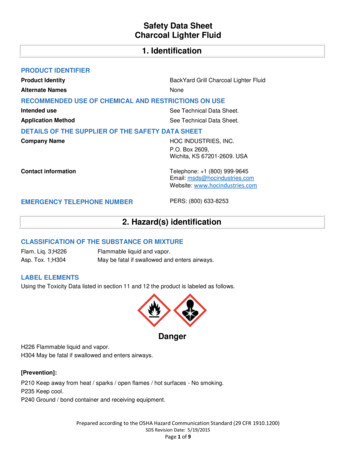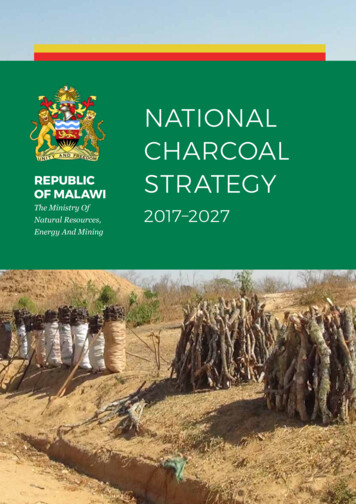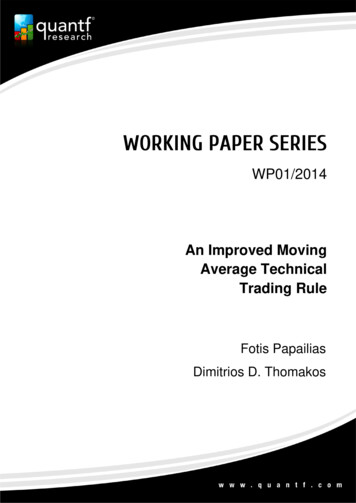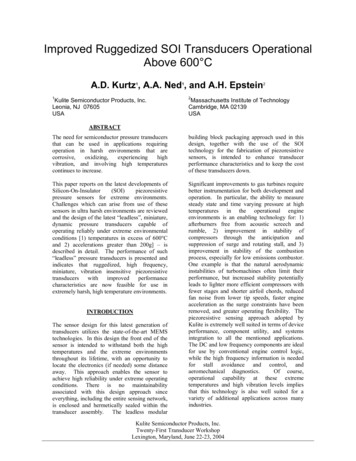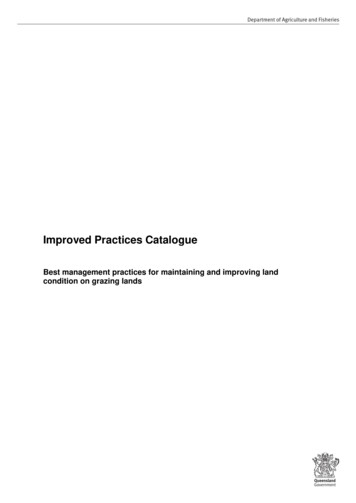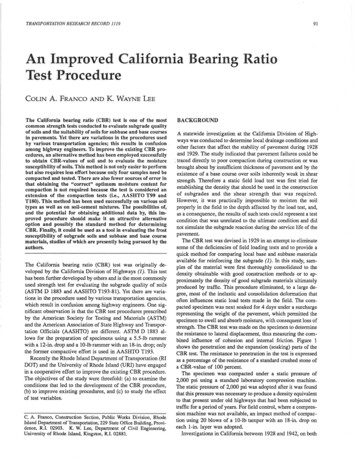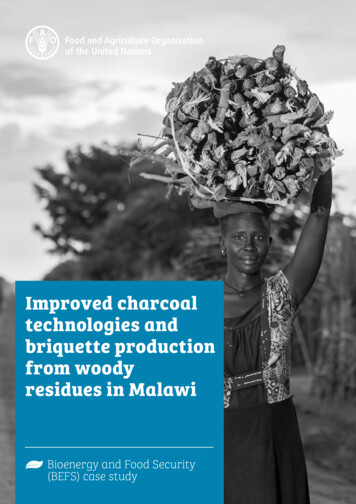
Transcription
Improved charcoaltechnologies andbriquette productionfrom woodyresidues in MalawiBioenergy and Food Security(BEFS) case study
Purpose of theBEFS Case studiesThe purpose of these casestudies is to present a range ofbioenergy supply chains and lookat how to assess the potentialwithin the chains based on theBioenergy and Food Security(BEFS) Approach and BEFS RapidAppraisal tools. The case studieshave been developed for trainingpurposes, to illustrate the BEFSapproach and tools and howthey are applied and to present anumber of examples of bioenergysupply chains found in countrieswhere BEFS has supportednational stakeholders.AcknowledgementsThe Bioenergy and Food Security (BEFS) case studies were written bymembers of the BEFS Team; Luis Rincon, Ana Kojakovic, Sergio Riveroand Manas Puri, led by Irini Maltsoglou with inputs from FedericaChiozza and Vicki Romo. The graphical layout was done by Juan LuisSalazar and Christabel Clark provided editorial support. The BEFS teamwould also like to thank the national experts and institutions thatprovided input and reviewed the material used. The case studies weredeveloped under the overall leadership of Alex Jones, Director of FAO’sClimate and Environment Division (CBC), and Olivier Dubois, CBC’sEnergy team leader.Our sincere appreciation goes to those working on the project activitiesthat became the field and background work for the case studies, morespecifically our thanks goes to the German Federal Ministry of Food andAgriculture, the national stakeholders in Côte d'Ivoire, Malawi, thePhilippines and Turkey, the European Bank for Reconstruction andDevelopment, and the local FAO offices in the countries.ContentsGlossary 4Introduction and policy background 6The context: agriculture and energy sector in Malawi 8Biomass Availability Assessment: how much forestry and wood processing residues could beavailable for energy production? 12Techno-economic assessment: can improved charcoal technologies help reduce pressure on thenatural resource base? At what costs? How does this compare to briquettes? 14Analysis of charcoal production technologies 14Analysis of briquette production technologies 17Is one better than the other? 19Conclusion 24References 25 FAO/Luis RinconCover Photo by Museruka Emmanuel / CC BY-SA 4.0
Case study focusAccess to modern energy in Malawi remains lowand is often limited to relying on traditional biomasssources such as fuelwood and charcoal. Sustainablysourced biomass and more efficient technologiescan contribute to reducing the energy access gapand making energy access more sustainable. Thiscase study presents opportunities lying withintechnology improvement and a specific set of woodyresidues’ bioenergy supply chains. The case studyillustrates the steps required to assess if the selectedbioenergy supply chains can contribute to mitigatingunsustainable use of biomass, while improving accessto sustainable energy. The bioenergy examplesassessed are briquettes made from forest harvestingand wood processing residues and improvedcharcoal technologies with the use of the relevantBEFS Rapid Appraisal tools. The case study describesthe policy and country context and then presentsthe biomass assessment and the technoeconomicassessment with the relative conclusions.Key elements of the bioenergy supply chainFeedstockTechnologyEnergy enduse optionBEFS RAToolsforestry harvestingresidues and woodprocessing residuescharcoal technologiesand briquettesenergy for cookingwood fuel tool,charcoal tool andbriquettes toolBioenergy supply chain: graphical uesBriquettes?Charcoal?
Improved charcoal technologies and briquette production from woody residues in MalawiGlossaryBiodieselBiodiesel is called the mixture of esters obtained from the transesterification of triglyceridescontained in oleo chemical feedstock such as vegetable oils, tallow and greases. Biodieselcan be used as substitute of diesel fuel.BioenergyBioenergy is the energy generated from the conversion of solid, liquid and gaseous productsderived from biomass.BiogasBiogas is a mixture of gases, mainly composed by methane (50-60 percent) obtained fromthe anaerobic digestion of biomass. In general, most of the organic wastes can be digested(excepting lignin). Among the most common biogas substrates can be counter livestockresidues, municipal solid wastes (MSW), water treatment plants sludges.BiomassBiomass is any organic matter, i.e. biological material, available on a renewable basis.Includes feedstock derived from animals or plants, such as wood and agricultural crops, andorganic waste from municipal and industrial sources.BiomassassessmentBiomass assessment analysis the production, availability and accessibility of biomassfeedstock for energy production. The assessment considers all uses of the potentialfeedstock, such as their use in maintaining soil fertility, or as feed for livestock beforecalculating the amount of biomass available for bioenergy production. This is essential toavoid any adverse impact that bioenergy production may have on agricultural sustainability.The result of the assessment is the identification of the main types of biomass feedstockavailable for bioenergy production as well as their geographical distribution within a specificregion or country.Briquettesand pelletsSolid biofuel obtained by compressing biomass in order to increase density. The primarydifference between briquettes and pellets is shape and size. Briquettes are generallybigger than pellets.CharcoalA porous black solid obtained from biomass. It is an amorphous form of carbon obtained bythe thermal decomposition of wood or other organic matter in the absence of air.CHPCHP stands for the cogeneration of heat and power. It is an efficient method for thesimultaneous generation of at least two energy forms, including heat, power, and/or cooling.CombustionCombustion is the most common way of converting solid biomass fuel to energy. Around90% of the energy generated from biomass is obtained through combustion, which istraditionally used for heating and cooking. Moreover, biomass combustion technologies areactively used for electricity generation at rural and industrial scales by means of steam.Crop residuesPlant material remaining after harvesting, including leaves, stalks, roots etc.EthanolEthanol is a short chain alcohol, which can be directly used as fuel or blended with gasoline.It can be produced through the fermentation of glucose derived from sugar-bearing plants(e.g. sugar-cane), starchy materials after hydrolysis or lignocellulosic materials (e.g. cropresidues, Miscanthus) after pretreatment and hydrolysis.ForestharvestingresiduesForest harvesting residues are parts of felled trees which are not removed from the forest.The rate of removal varies among forests and usually depends on the end product thatwill be made and the cost-effectiveness of removing the tree. In the case of industrialroundwood, upper logs, branches and different cut-offs are often left in the forest, whilestems are removed. Sometimes, stems are debarked in the forest.GasificationGasification is thermochemical process where biomass is transformed into a gas calledsyngas. This gas is a mixture mostly composed by hydrogen, methane, and nitrogen.Depending on processing technology, conditions and gasifying agent (i.e. air, oxygen orwater). The syngas has different composition and as result different fuel qualities.4
BEFS Case studiesLivestock residuesResidues originating from livestock keeping. It mainly includes solid excreta of animals.RoundwoodWood in the rough. Wood in its natural state as felled, or otherwise harvested, with orwithout bark, round, split, roughly squared or other forms (e.g. roots, stumps, burls, etc.). Itcomprises all wood obtained from removals, i.e. the quantities removed from forests andfrom trees outside the forest, including wood recovered from natural, felling and logginglosses during the period - calendar year or forest year.SawnwoodSawnwood, unplanned, planed, grooved, tongued, etc., sawn lengthwise, or producedby a profile-chipping process (e.g. planks, beams, joists, boards, rafters, scantlings, laths,boxboards, "lumber", sleepers, etc.) and planed wood which may also be finger jointed,tongued or grooved, chamfered, rabbeted, V-jointed, beaded, etc. Wood flooring is excluded.Techno-economicassessmentIn the bioenergy context, Techno-economic (TE) assessment facilitates a data-drivendecision making about the performance of a bioenergy value chain, in a given context. Thismethodology is based on understanding the technical (e.g., technology feasibility, biomasssupplying) and economic (e.g., production costs, profitability, capital investments) featuresof these value chains. Depending on the context and objectives, TE assessments can beextended to include socio-economic and environmental aspects.WoodprocessingresiduesThese residues include sawdust, slabs and chips generated as residues during the woodprocessing. The amount of residues generated in a sawmill depends on the type oftechnology used and its efficiency. Often, these residues are not fully utilized due to the lackof demand in the immediate vicinity of the processing plant.WoodfuelWoodfuels arise from multiple sources including forests, other wooded land and treesoutside forests, co-products from wood processing, post-consumer recovered wood andprocessed wood-based fuels.References:ECN. 2018. Biomass combustion and co-firing for electricity and heat. In: ClimatechWiki [online]. [Cited 10 May2018]. www.climatetechwiki.org/technology/biomassFAO. 2004. Unified Bioenergy Terminology (UBET). Forest Products and Economics Division, ForestryDepartment, p. Rome, Italy. (also available at ge)FAO. 2018. BEFS Rapid Appraisal. In: Energy [online]. [Cited 10 May /befs-ra/IEA. 2007. IEA Technology essentials-biofuel production. International Energy Agency: 1-4.(also available at ion/essentials2.pdf).OECD/IEA. 2007. Biomass for Power Generation and CHP. IEA Energy Technology Essentials: 1–4.(also available at ion/essentials3.pdf).OECD/IEA & FAO. 2 017. How2Guide for Bioenergy Roadmap Development and Implementation. IEAPublications, p. 78 pp5
Improved charcoal technologies and briquette production from woody residues in MalawiIntroduction and policy backgroundThe government of Malawi in its Growth and Development Strategy 2017 – 2022 has defined energyas a crucial input into all critical social and economic services. It considers access to a clean, reliable,reasonably-priced and sustainable energy supply as central to maintaining and improving the livingstandards of people. In order for the economy to grow and to attract new investments, Malawi needsreliable electricity generation from alternative energy sources (IMF, 2017).In relation to this, one of serious problem that Malawi faces is the dependence of its population onsolid fuels to cover the energy demand for cooking, both in urban and rural areas. This, in turn, leadsto unsustainable utilization of biomass that contributes to deforestation and land degradation.In response to this, the National Forest Policy 2016 includes an objective on reducing deforestation,forest degradation and dependence on solid biomass fuels. While recognizing that charcoal andfirewood will continue to feature highly as a source of energy in Malawi in the immediate future,the country seeks to address this challenge to halt and reverse the rate of deforestation andforest degradation. The Renewable Energy Policy (2017) and the National Charcoal Strategy (20172027) promotes the sustainable use of solid fuels, the adoption of alternative cooking fuels, useof efficient charcoal and firewood cookstoves, and improved sustainable wood production andregulation enforcement.BOXBioenergy and food security (BEFS) approachThe Bioenergy and Food Security (BEFS) Approach has been developed by FAO to supportcountries to develop evidence based sustainable bioenergy policies. The approach supportscountries in understanding the linkages between food security, agriculture and energy, andbuilding sustainable bioenergy policies and strategies that foster both food and energy securityand contribute to agricultural and rural development. A core element of the BEFS Approach is theBEFS sustainable bioenergy assessment component. The assessment covers the whole bioenergypathway starting from feedstock availability assessment to analysis of energy end use options.The fi
Bioenergy is the energy generated from the conversion of solid, liquid and gaseous products derived from biomass. Biogas. Biogas is a mixture of gases, mainly composed by methane (50-60 percent) obtained from the anaerobic digestion of biomass. In general, most of the organic wastes can be digested (excepting lignin).
